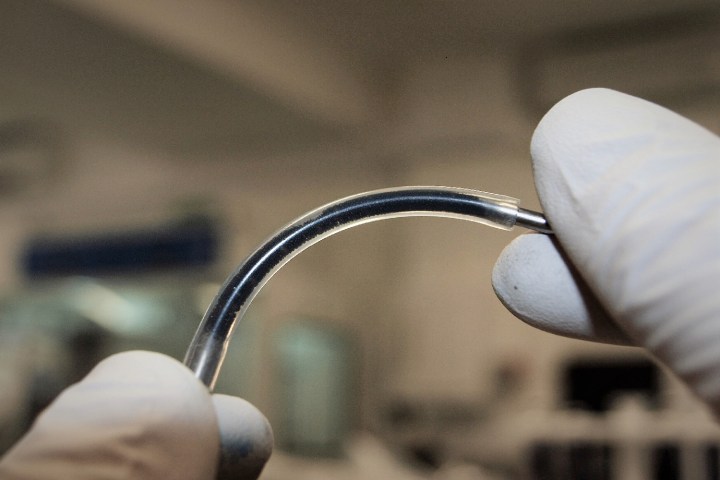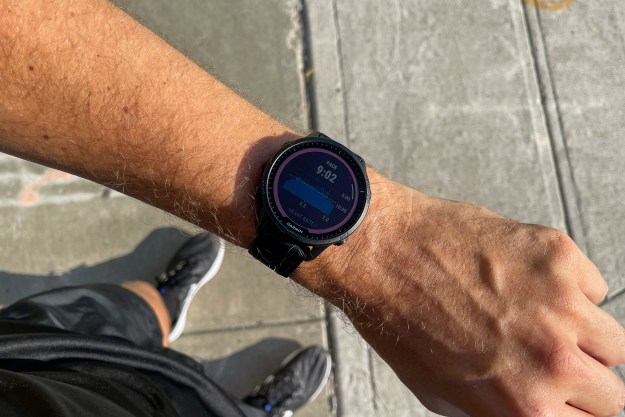
Developed by researchers at the United Kingdom’s University of Sussex, the smart sensor is composed of a length of flexible rubber tube, filled with water, oil, and graphene particles. The device is able to detect changes including the rising and falling of a person’s chest, potentially to lifesaving effect.
“Normally what happens when you mix oil and water together is that they separate out; think about shaking a hot lava lamp,” lead researcher Dr. Matthew Large told Digital Trends. “Eventually all the small droplets you create collect together, because oil and water don’t like being in contact with each other. What we have done is put graphene at the interface between those two liquids, which both liquids are more happy to be in contact with. This has two effects: It stops the droplets from merging, so the liquids can’t separate, and it makes the bubbles conductive to electricity.
“It is that last point that has allowed us to develop a liquid sensor that can detect stretching; electrons can hop between the graphene sheets, but when we stretch the bubbles this becomes much more difficult. We detect that change in electrical current and can relate it to the strain on the sensor.”
Spurred on by the Global Challenges put forward by the Gates Foundation, the team hopes that this relatively simple solution could be used to create a low-cost, wearable health monitor technology. In particular, they think it could be useful as an early warning system for parents if their baby’s breathing or heart rate changes dramatically — allowing them to seek help as quickly as possible. It could also be used for older patients in a hospital setting.
“We are working alongside an industrial partner, Advanced Material Development, to evolve our prototypes into a marketable product,” Large said. “Then we will be looking to talk to equipment manufacturers about production. We are anticipating having something marketable within four years.”
A paper describing the research was recently published in the journal Nanoscale.



